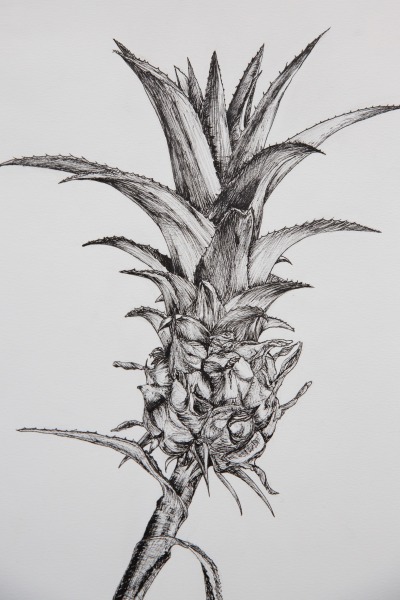Drawing From Nature
Botanical illustrations are sometimes treated like objective representations of nature, but students in SMS/HIS 295-01 Special Topic: Botanical Drawing and its Social Origins know that drawings never reflect the unbiased truth. “There are so many contingent factors that shape how someone sees and represents what they are drawing,” says Tara Shukla, artist and lecturer. In her short course this fall, students delved into visual culture — exploring how the processes of making art can become forms of knowing.
Taught in the style of studio art classes, this cross-listed History and Science, Medicine, and Society course allowed students from a wide array of majors to engage deeply with the creative process. Most of the class time was dedicated to drawing instruction and practice, with weekly readings and lectures focusing on plant anatomy and the work of botanists from the late 1700’s to mid-1800s — what Shukla calls “the golden age of botanical drawing.” Throughout the semester, drawing projects were accompanied by writing assignments in which students reflected on the scope, process, and composition of their own art.
Over the seven-week course, neither learning nor drawing were confined to the classroom. Several class periods were spent sketching at prairie planting sites across campus, and on other days, students gathered among the flora in the warmth of the Noyce greenhouse.
During the final two weeks of the course, students tackled an independent drawing project. Using pencil or pen, they conducted a detailed study of a plant specimen of their choosing. Students selected subjects ranging from exotic greenhouse plants and native prairie species to store-bought flowers and acorns gathered on campus.
Those who chose to draw live specimens for their independent project faced a challenge unique to botanical drawing: Plants grow — fast. And a sketch begun one day may be inaccurate a week later. These slight changes in composition caught the newly trained eyes of the artists. “The course has changed how I interact with nature,” says Hana Leonard ’25. "Slowing down and drawing from observation, I saw all this detail I'd never noticed before."
Students displayed their final drawings in an exhibition held after fall break. As faculty and students passed through the exhibition on their way to classes, many paused to examine a pineapple, grown in the College greenhouse and drawn in pen by Elizabeth Zimmerman ’24. To Shukla, who believes that botanical illustration can lead people toward greater attention to and awe of nature, this fascination was understandable.
“The closer you get to realism, the more mysterious the object becomes,” she says.



